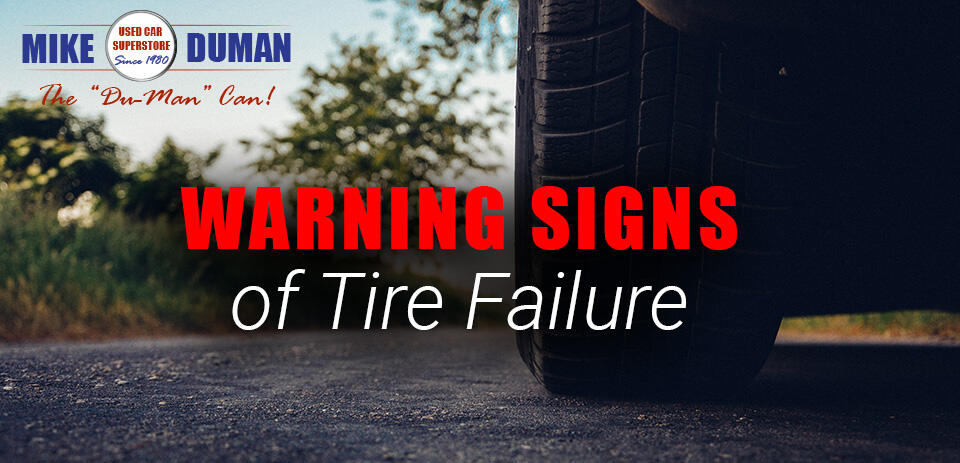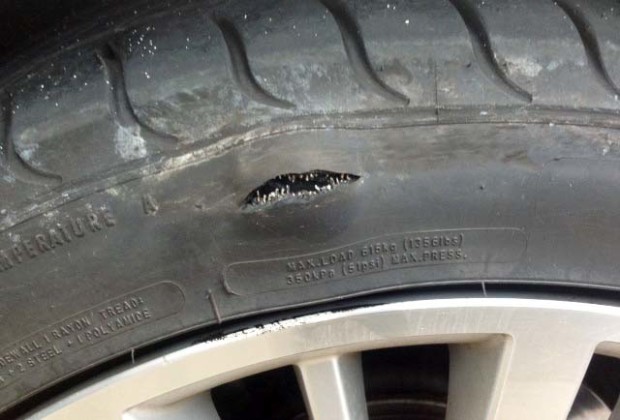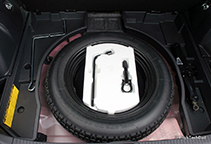
Nothing could be more important to your automotive safety than where the rubber meets the road. Just like your shoes wear out from walking, your tires wear down every time you drive. Some tires are constructed of more durable materials, and not every type of tire wears down for the same reasons. Age, exposure to UV rays, and of course, mileage, will all take their toll on how your tires handle the highway speeds and turns that you likely go through every day. Here are some tips on ensuring that your tires are ready for everything that you will put them through.
Tread Depth
Tire treads are the gripping power of the tire. How much tread depth you truly need is based on what kind of driving you do, but the bare minimum requirement is 1/16th of an inch. You can purchase a tread depth gauge at your local car parts store for about three fifty, but we can save you $3.49 by teaching you just to use a penny. Place a penny in the grooves of the tread, with Abe’s head pointing down to the rim. If at any point the top of his head is visible, it is time to replace your tires immediately. The top of Lincoln’s head is the bare minimum tread under ideal conditions. If you find yourself regularly driving in rainy or winter conditions, you need far more rubber on your tires. Use a quarter in the same way that you placed the penny in your tread, with Washington’s head down to the rim, and you have measured a 4/32nds tread. If you see the top of George’s head, you will be putting yourself and your passengers at risk in rainy or otherwise inclement weather.
Visible Wear Bars
Should you neglect to conduct regular coin tests on your tires, most new tires are equipped with a tread wear indicator bar. Indicator bars are evenly spaced rubber ribs built into the tread around the entire tire. As your tire wears, these ribs become more prominent. Wear bars appear around your tire when excessive tire wear has occurred. Replace your tire immediately.
 Treads get the most attention because they get the most wear, but don’t forget to check your sidewalls. There are many ways to damage your sidewalls, from pulling too close to a curb while parallel parking, to running over a scrap in the road. Visually checking the sidewalls of your tires should be a regular part of your weekly maintenance, as well as any pre-trip inspection. Bulges and tears are often caused by impact damage that has allowed air from the tire to create a pocket in the body of the tire. These impacts are not always notable events and may be as simple as a hard bump while crossing a railroad track, speed bumps taken at too high speed, or even just a bumpy country road. If you notice any bump or bulge in your tire, take the tire to a service station right away. A Warranty rarely covers this kind of damage, and a rupture at high speed can cause a catastrophic tire blowout. If possible, do not drive on a bulging tire, but if you absolutely must, low speeds may avoid great injury and damage.
Treads get the most attention because they get the most wear, but don’t forget to check your sidewalls. There are many ways to damage your sidewalls, from pulling too close to a curb while parallel parking, to running over a scrap in the road. Visually checking the sidewalls of your tires should be a regular part of your weekly maintenance, as well as any pre-trip inspection. Bulges and tears are often caused by impact damage that has allowed air from the tire to create a pocket in the body of the tire. These impacts are not always notable events and may be as simple as a hard bump while crossing a railroad track, speed bumps taken at too high speed, or even just a bumpy country road. If you notice any bump or bulge in your tire, take the tire to a service station right away. A Warranty rarely covers this kind of damage, and a rupture at high speed can cause a catastrophic tire blowout. If possible, do not drive on a bulging tire, but if you absolutely must, low speeds may avoid great injury and damage.
Image right via www.autotrader.ca
Cracking and Weathered Rubber
All things age, including the rubber in your tires. Over time, the rubber will dry out and crack for many reasons. Some of the causes can be avoided, such as ensuring proper inflation to reduce stress on the structure of the tire and avoiding the use of cleaning and dressing chemicals which tend to increase the speed that the rubber dries out at. Not all causes are easily avoided, as cracking may also be due to heat, ozone, and ultraviolet rays from the sun. Even storing your car in a garage, never letting it see the light of day will not stop the eventual cracking, so attention to this detail can save you an unwanted blowout. If your tires show signs of cracking and weathering, bring your car to a tire shop for a professional analysis.
Do Not Forget the Spare
 All too often we only look at the four tires on the ground. They are easy to see, and a visual inspection only takes a few moments. While we conduct these inspections to ensure that we do not have a blowout, there are many other ways that our tires can fail. Running over a curb too hard, driving through a construction zone, or hitting debris on the highway can quickly destroy a tire. When these accidents happen, we rely on having a good spare tire in the trunk. If you have not checked your spare for proper inflation in the last six months, you are overdue. Spare tire pressure should be checked every time you change your oil. Unless you have a lot of stuff in your trunk, this only takes a few moments. Nothing makes a bad day go to worse faster than having a tire go flat only to find that your spare is flat too!
All too often we only look at the four tires on the ground. They are easy to see, and a visual inspection only takes a few moments. While we conduct these inspections to ensure that we do not have a blowout, there are many other ways that our tires can fail. Running over a curb too hard, driving through a construction zone, or hitting debris on the highway can quickly destroy a tire. When these accidents happen, we rely on having a good spare tire in the trunk. If you have not checked your spare for proper inflation in the last six months, you are overdue. Spare tire pressure should be checked every time you change your oil. Unless you have a lot of stuff in your trunk, this only takes a few moments. Nothing makes a bad day go to worse faster than having a tire go flat only to find that your spare is flat too!
All too often car maintenance is skipped for busy schedules. We say that we do not have time to check our automotive safety features regularly. The five minutes it takes to inspect your tires every Saturday morning can and will save you hours of frustration from sitting on the side of the road waiting for a tow truck to assist you. The National Highway Traffic Safety estimates that tire failure causes approximately 11,000 crashes a year. Do not be a statistic!
